#jötnar
Text

Ran.
#ran#ran goddess of the sea#heathen goddesses#norse goddesses#goddesses#norse paganism#norse heathen#heathen#norse mythology#jötunn#jötnar#ocean#norse pagan#norse polytheism#polytheist#polytheism
498 notes
·
View notes
Text
| Faye vs Thor |
once again, i am here providing faye content 🫡

“With that axe, and that warrior… Thor was in for the fight of his life.”

“Thor was drunk, sloppy, but she was drunk on something else… rage.”
#faye gow#faye#faye vs thor#laufey gow#laufey#thor gow#god of war ragnarok#god of war#gow5#wife of kratos#giantess#giants gow#jötnar#jötunn#jötunheim#laufey the just
194 notes
·
View notes
Text
The Jötnar are immense. Take the road and drive until there’s no civilization in sight anymore. Watch the landscapes, see how far the horizon stretches: that is the might of the Jötnar, the size of giants.
#personal#norse paganism#paganism#spirituality#heathenry#deities#deity work#polytheism#norse polytheism#Jötnar
129 notes
·
View notes
Text
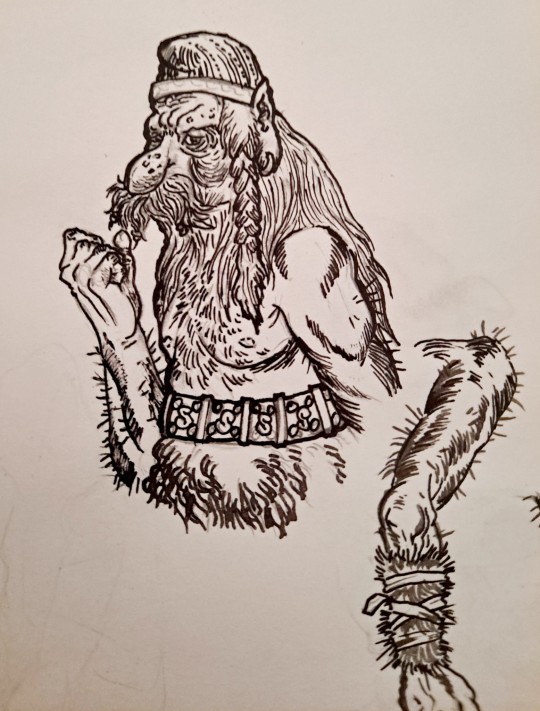

As you can see, I'm experimenting with a new inking style
Pictured are Jötnar, the giants of Scandinavia- not dissimilar are their cousins the Ettin, though contrary to popular belief they have zero relationship to trolls outside of antagonistic hand gestures, and the occasional bone bread poisoning attempt. Nowadays most remaining Jötnar work in heavy industry or mining because they're forcibly prevented from their tradition of solitary hill life by a bevy of regulations and poor relationships with local governments during the rise of industrialization. "Uncivilized" giants still live in places like Trillemarka where they have to hide because creatively borrowing vast herds of livestock is a crime apparently.
The best senses of the average Jötunn are its Hearing and Touch, their large bulbous noses being primarily for display. Their vaguely elephantine legs convergently support the vast bulk of their frames, which can range from 610cm in height to 818cm in height, and cushion the shock of sliding down steep ravines. Despite their immense hand size, Jötnar are capable of fairly fine metalworking and recovered artifacts often possess fine detail, as do their spearheads, which are usually cast from entire veins of copper.
Note- Jötnar have and still will eat humans on occasion, and while ritual meaning is ascribed to this, the truth is they just do it when they're pissed off at you.
#myart#ink#brush inking#india ink#Jötunn#Jötnar#norse mythology#giants#artists on tumblr#traditional art#sketch study#sketches#sketchbook#style study
25 notes
·
View notes
Text
Cold winter: Ymir
YMIR
Category: Norse mythology
If you study Norse mythology, you should know Ymir’s name. Not that it is his only name, mind you: he is also called Brimir, Blainn, Aurgelmir… And he is also the key character of the Norse creation myth – not only was he one of the very first living beings of the universe, but he is also considered to be the ancestor of the mythological race known as the “jötnar”. You know, the jötnar… a rival race of the gods, renowned for their great size and immense powers. You might be more familiar with the popular English translations of “giants” – but know that the “giants” of Norse mythology are actually the “jötnar”, which is… not really the same thing, the same way you can’t translate “Titan” by “giant”. But I get carried away… Who is Ymir? As usual we need to look at the two main sources of Norse mythology: the Eddas.
Let’s begin with the older record, the Poetic Edda:
The Poetic Edda was the first to use the “triple name” of Ymir. The jötnar are described as “Ymir’s kin” and explicitly said to be all descendants of Ymir. Ymir is said to have lived in a time before waves, sand or sea existed, in a place without grass, earth or sky: the “chaotic chasm”, the “yawning gap”, aka the Ginnungagap. He is described at one point as an “ice-cold” or “frost-cold” giant, and we know that the gods created the world out of Ymir’s body: his flesh became the earth, his bones the mountains and hills ; his skull became the sky/heavens, his blood the ocean ; his hair became the trees, and his brain became the clouds, and Midgard, the realm of the human beings, was created out of Ymir’s eyebrows.
Ymir’s second name, Aurgelmir, comes from a description of the genealogy of the jötnar. The oldest of the jötnar is described as being Bergelmir, born before the earth was formed: he was the son of Thrudgelmir, and the grandsom of “Aurgelmir”. We don’t know much about Thrudgelmir, but we know that Aurgelmir was the first jötunn , created out of the poison dripping out of Elivagar (the primordial rivers and half-frozen water currents at the beginning of the world), and who became the ancestor of all jötnar: he did not reproduce with a female being, since there was none in this time, but rather he created life out of himself. A girl and boy were said to have been born from Aurgelmir’s armpits, while his two feet produced together a six-headed jötunn (unnamed, but who might be the same as Thrudgelmir).
As for his last names, Brimir and Blain, they come from one specific passage of the Poetic Edda where the race of the dwarfs is said to have been created by the gods out of “Brimir’s blood and Blain’s legs”.
This is all we know of Ymir from the Poetic Edda. For more info we will have to look at the Prose Edda, who as usual takes back the elements of the Poetic and weaves on them, expands them into a more cohesive narration.
In the Prose Edda we actually have a full and very detailed cosmogony story for how the world and Ymir came to be. In the beginning of all things, there was only one of the “nine realms”: Muspell, a bright and glowing realm of heat and fire. Then, after some time a second realm appeared: Niflheimr, a realm of coldness, fog and darkness. From Niflheimr sprang forth eleven cold and poisonous rivers known as the Elivagar (remember, just above). And between the two realms was the Ginnungagap, the void between the worlds. Now, the eleven rivers flowed out of Niflheimr into the “northern” section of the Ginnungagap – there the liquid of the river turned into big chunks of ice, where the toxic vapors of the poison became rime ice. The rivers thus, layer by layer, covered the northern area of the Ginnungagap in ice – while in the southern region of the void, Muspel kept sending bright sparks and molten flecks, keeping the area hot and lighted. In the middle of the Ginnungagap was thus a “mild” place not too hot and not too cold, not too dark and not too bright: there, the ice met the hot air and melted, and from this melting was born an entity… an entity in the “shape of a man”, that is known to us as “Ymir” but that the jötnar (his descendants) called “Aurgelmir”. Ymir was not a god, but the first of all the jötnar – even though he only particularly “birthed” one specific subrace of the jötnar, the “hrimthursar” (usually translated as “frost-giants” or “ice-giants”): he birthed them during his sleep. During his sleep he sweated heavily, and from the sweat of his left arm was born a son, from the sweat of his right arm was born a daughter, and his two legs somehow “mated” with each other so to speak to produce a second son.
Now we get into a part of the story the Poetic Edda did not cover: right after the melting created Ymir, it created a second being, Audumbla the primordial cow. From her teats constantly flower four rivers of milk: they were what Ymir fed on. As for the cow herself she licked the salty ice of northern Ginnungagap: she kept licking the ice, again and again, for three whole days to feed herself, and in the process she somehow either set free or sculpted out of this ice a man – that was not a jötunn, but rather the first god (or the ancestor of gods). He was named Buri – “large, powerful, and beautiful”. Buri somehow had a son named Borr (how? Mystery), and this son married a jötunn girl named Bestla, and from this divine/jötnar union were born three sons. Odin, Vili and Vé. And these three sons, for unknown reasons, gathered together and killed Ymir. Oh yes, maybe not so much for unknown reasons… because you see, Ymir is said to have been an “evil” being, and similarly all of the jötnar are also described as being just as evil as him – while the narration mentions that Odin and his brothers (but especially Odin) were named after greatness and glory, and that somehow they were predestined or fitted to become the rulers of the world. Anyway, the three gods killed Ymir, and from this was a bloody murder. A VERY bloody murder: Ymir’s body produced so much blood it actually created an entire flood, in which all of the jötnar race died, drowned by the blood of their progenitor. All… except one, named Bergelmir, who escaped with his wife on a sort of chest or coffin that floated over the blood.
Once the primordial murder was committed, the trio of gods carried Ymir’s body to the middle of the Ginnungagap and created the world out of the corpse. From his flesh they created the earth, from his blood the sea and the lakes, his bones became big rocks and his teeth smaller stones ; from his skull they made the sky (and to hold the sky high above the earth they posted four dwarves at the four corners of the world to hold it). From the sparks and flames of Muspel the gods created the different lights of the sky ; and from Ymir’s brain they made the sky. The world was created as one large circular continent surrounded by a vast sea : the gods divided the world into two. The shores and outside of the “circle-continent” were given to the surviving jötnar, where the humans (and gods) lived in the inner part of the continent in Midgard – a “fortification” build out of Ymir’s eyelashes, to keep away the angry and hostile jötnar. Finally, Ymir’s death accidentally created the dwarf race: after the gods built Asgard for them to live in and held their council, they quickly wondered what to do with the dwarfs (or “dvergr” as they were known in Old Norse) – indeed these beings had actually sprang out of the earth of their own, “like maggots out of the flesh”. In fact, the comparison is pushed forward when it is revealed that the dwarfs started their life AS maggots: the dvergar gained “life and shape” in Ymir’s flesh/the earth, and were no more than a specific kind of maggot feeding of the dead jötunn flesh. The gods however decided to offer these beings intelligence, and to give them a new shape, the shape of “men”, though they kept their ability and habit to “live in the earth and in rocks”.
- - - - - -
When it comes to the "giants" of Norse mythology, things are very complicated...
The English translation of Norse myths like to just call everything "giants". Ice giants, fire giants, stone giants... But things are more complicated.
As I said the race of the jötnar (jötunn in singular) is the "official" name of the race as a whole. It means "devourer" and is considered to be akin to the Greek "Titan". However in the legends, the jötnar are also called by alternative names. Such as "thurs" (thursar in plural), which is a name often invoked when it comes to describing specific sub-types of evil species: the "frost giants" descendants of Ymir are in truth "hrimthursar" ; and similar other sub-types of giants usually use the term "thurs".
It also doesn't help that the term "troll" is sometimes used to designate these entities, but you should not get too confused. The image of the "Norse troll" we have of this sort of big-eating not-so-bright giant with big noses comes from the various types of "modern" trolls as they shaped themselves through folklore and folktales - but originally? "Troll" was just a name for anything magic or supernatural. Thus you often find the term "troll wife" or "troll woman" in old Norse texts - and while it can mean a "female troll", it can also just mean a witch or enchantress or even the equivalent of a "fairy", as "troll woman" just means "magic woman", "supernatural woman". And similarly, when an object was said to be a "troll" object, it meant it had magic properties or some sort of charm related to it.
There is a whole study to make here of the various names of the jötnar, but given my limited grasp on the various Nordic languages I'll just let you find out on your own
38 notes
·
View notes
Text
A Jötunn, sometimes refered to as a Frost Giant, though many were described as not particularly large. The Jötnar were formidable mythical creatures found in Germanic and Norse traditions, and in Scandinavian mythology, they are described as a powerful race of supernatural beings, often portrayed as being at odds with the Vanir, Asir and other supernatural beings.

5 notes
·
View notes
Text

Jötnar — descendants des géants, invocateurs de tempêtes, victorieux
0 notes
Photo

These little jötunn siblings feature a fusion of deer antlers, a wolf skull, and human arms. They each have a gem offering made of Swarovski crystal, one orange like the embers of a smoldering fire, one soft blue like arctic ice. I loved playing with the wild variety of size and feature descriptions that mythology attributes to the jötnar of Jötunheimr. They are all described as supernatural entities, either neutral or evil, possibly having a role in bringing about Ragnarok. While a jötunn is a terrifying creature any way you describe it, I wanted mine to have a touch of cuteness. #jötunn #jötnar #mythology #creature #creaturejewelry (at Langley, British Columbia) https://www.instagram.com/p/Cox8S--SEiQ/?igshid=NGJjMDIxMWI=
0 notes
Text
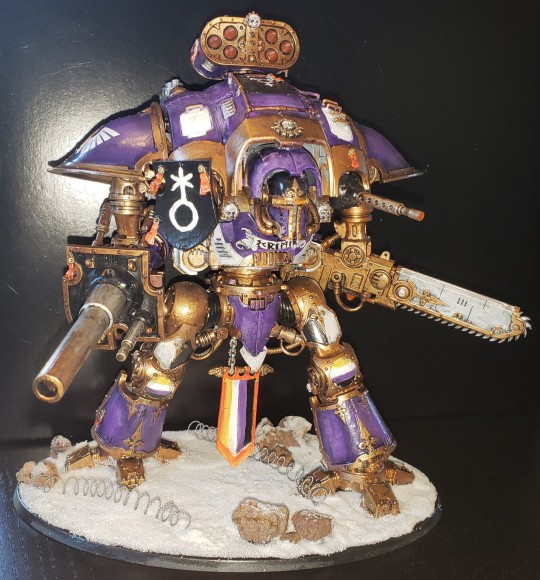







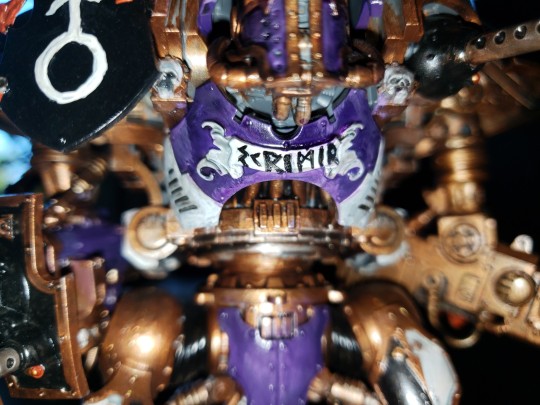
BEHOLD! The Paladin Knight Questoris Utgarda-Loki of House Jötnar, Defender of Sanctum Novis! (And my entry into a local game store's pride contest)
There's some grey spots I couldn't reach, but you would only see them if you were going for the detail shot lol
#wh40k#warhammer 40000#warhammer 40k#adeptus mechanicus#admech#sanctum novis#look at me figures boy#imperial knight#house Jötnar
134 notes
·
View notes
Photo
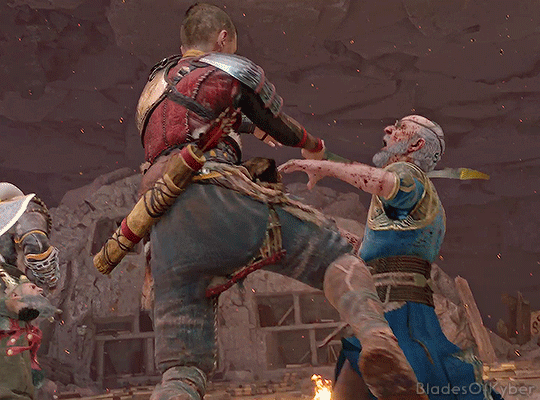
i made this in about three minutes, and you can tell, but odin’s face as he gets yeeted is just fucking priceless
#fatebreaker armor?#free tbh it was a gift#Jötnar bow? also free#odin's face as he gets tossed by a giant using a giant's weapon while wearing armor made by a dwarf?#fucking priceless#there are some things money can't buy#for everything else#there's hacksilver#shitpost#i made this in about three minutes#this was supposed to be part of a gif set but odin's face was too good#the realms at war#God of War: Ragnarök#god of war gifs#atreus god of war#odin god of war#god of war#gamegifs#mine: gifs
171 notes
·
View notes
Text
A memory of better days
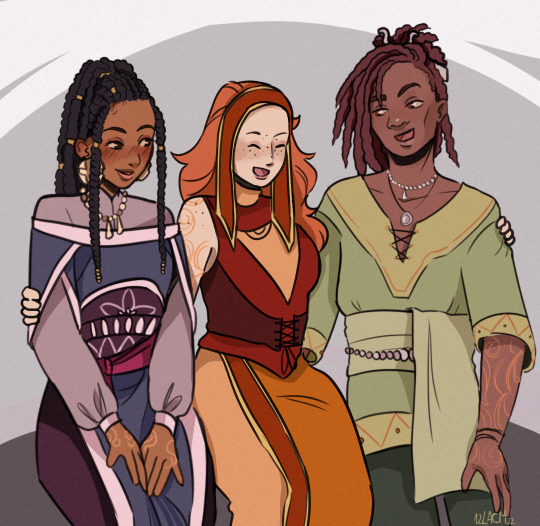
Faye, champion of the Jötnar, and her best friends Helga and Floki (Angrbodas parents).
---
I've been thinking about Faye a lot and what her past would have looked like. I wonder if she had an equally hard time with her prophecy as Atreus did since she too was once a kid.
I imagine her living with the other giants in Ironwood when she was young, two of them being her best friends; even after they learned their prophecies.
I've enjoyed trying to design Angrbodas parents a lot! Let me know what you think of them!
#Man I enjoyed drawing this so much#I found that Floki and Helga were Angrbodas parents in the mythology#correct me if im wrong#anyway watch out for the subtle hints in the drawing ;)#god of war#god of war ragnorak#gow#angrboda#Faye#angraboda parents#champion of the jötnar
295 notes
·
View notes
Text
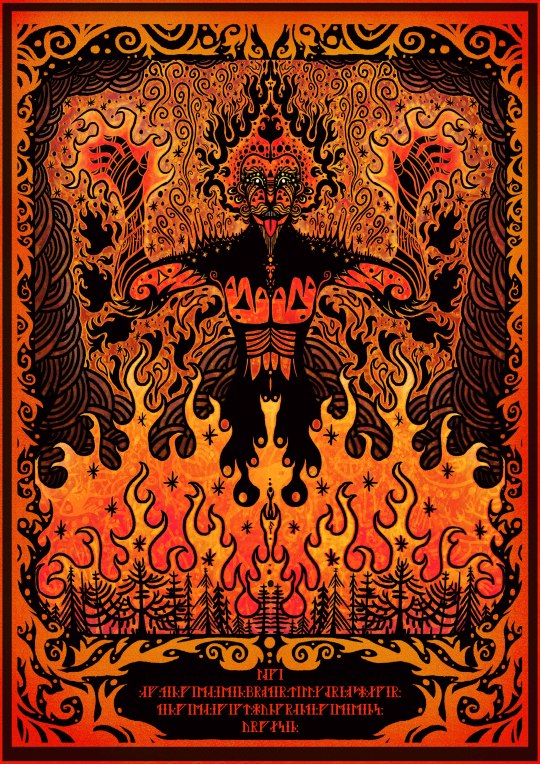
Logi of the wild fires.
#logi#låge#låga#eld#fire#fire god#fire giant#fire jötun#jötnar#jötunn#norse god#norse mythology#polytheist#pagan polytheism#polytheism#norse polytheism#paganism
36 notes
·
View notes
Text

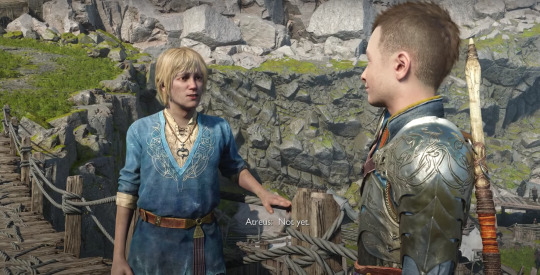
Who wants to bet that this will end up being a hint at some power Atreus will get in the future just like his "Are you sure I can't turn into a wolf" line?
#here's to hoping we get Atreus learning different magic from the different pantheons he goes through looking for the Jötnar#it seems way to particular of a question for it to not come up again#Odin didn't teach Atreus any magic so I vote he learns stuff from Heka/the Dagda or Merlin#we saw how quickly he picks up vanir with freya etc#god of war#gow#god of war ragnarok#gow ragnarok#god of war ragnarok spoilers#gow ragnarok spoilers#gow atreus#atreus#god of war atreus#skjöldr#gow skjöldr
160 notes
·
View notes
Text
If Kratos dies in the nine realms, where does his soul go? Helheim because he's half mortal human? The Light of Alfheim because he's not entirely human/mortal? Does he have the part of his soul that lets you FIND the light? Whatever's left of Hades? NOWHERE because of what happened to Hades? Wherever the Aesir gods go? What about Atreus? Human souls go to Helheim or Asgard (though I guess just Helheim now), Jötnar join the light of Alfheim, Aesir gods don't know WHERE they go. Would they become spirits like Athena?
What defines your afterlife, where you die or where you're born? Is there a place for children of Olympus in the afterlives of the Norse world?
#bet we could've found out if Atreus had just used the dang mask#god of War#gow#gow spoilers#god of war Ragnarok#god of war spoilers#atreus#loki laufeyson#kratos#olympians#norse gods#Aesir#loki of the jötnar#ghost of sparta#odin gow#odin#odin borson#athena#alfheim#helheim#Asgard
73 notes
·
View notes
Note
My personal headcanon is that although there are warriors in Jotunheim, magic is praised more than physical strength is.
second ask:
well, to continue the magic talk.
It'd be something biological that all Jotuns have, but it's more about who can give more use to it. Being royalty one with the best use of it.
This wouldn't mean fighting with your bare hands would be look down upon though, it's just different kind of strengths.
(i like imagining jotunheim would have a positive view on it thats it)
#i also like to think that if he stayed on jötunheim#loki would have gravitated towards magic because he was so Small#small enough that it could count as a genuine disability depending on the way day-to-day life is structured#so magic could be a way for him to continue to stay powerful while feeling very out of place#a (likely exhausting) way to prove himself as capable regardless of whether he really needs to or not#plus it would make it more heartbreaking that he was discouraged from magic on asgard if like#the aesir people associate seiðr with jötnar#which would also make sense as to why frigga was more willing to teach him#headcanons#headcanon#jötun loki#jotun design party#jotun loki#marvel
8 notes
·
View notes
Text
Ásgarðrian Galdr
by Valerie_Vancollie
Complete
Summary:
What if Loki was able to warn his past self, so he did not lose control during his regency and was able to act as he normally would? What if he had been able to remain calm and in control of himself, and the situation?
"How?" Loki demanded.
"Betrayal," his future self stated simply, rage clear in every syllable. "But you must control your reaction and come to see me, or you will repeat my mistakes and we will miss an opportunity to take control and alter things in our favor."
It would have changed everything.
(Tags and stats below the line)
Archive Warning: No Archive Warnings Apply
Rating: Teen And Up Audiences
Category: Gen
Fandoms: Marvel Cinematic Universe, Thor (Movies), Norse Religion & Lore, Marvel
Relationships: Loki & Thor (Marvel), Frigga | Freyja & Loki (Marvel), Loki & Odin, Loki & Warriors Three (Marvel), Heimdall & Loki (Marvel), Loki/Sigyn (Marvel), Asgardians & Loki (Marvel), Frigga | Freyja & Thor (Marvel), Thor & Warriors Three (Marvel)
Characters: Loki (Marvel), Loki (Norse Religion & Lore), Thor (Marvel), Frigga | Freyja (Marvel), Odin (Marvel), Sif (Marvel), Heimdall (Marvel), Tyr (Marvel), Laufey (Marvel), Laufey (Norse Religion & Lore), Eir (Marvel)
Additional Tags: Alternate Universe, Canon Divergence - Thor (2011), Loki (Marvel) Does What He Wants, POV Loki (Marvel), BAMF Loki (Marvel), Good Loki (Marvel), Hurt Loki (Marvel), Loki (Marvel) Has Issues, Intersex Loki (Marvel), Loki (Marvel) Feels, Jotunn Loki (Marvel), Protective Frigga (Marvel), Parent Frigga (Marvel), Odin's A+ Parenting (Marvel), Odin's Bad Parenting (Marvel), Asgard (Marvel), Jötunheimr | Jotunheim, Intersex Jotunn (Marvel), Jotunn | Frost Giant, Jotunn Biology (Marvel), Parent-Child Relationship, Brothers, Brotherly Bonding, Brotherhood, Brother Feels, Brotherly Angst, Angst with a Happy Ending, Angst and Hurt/Comfort, Heavy Angst, Angst and Feels, Suspense, Family Drama, Psychological Drama, Angst and Drama, Courtroom Drama, Powerful Loki, Punishment, Bigotry & Prejudice, Internalized racism, Canon-Typical Violence, Betrayal, Speciesism, Original Character(s), Yggdrasil - Freeform, Child Abandonment, Alternate Universe - Time Travel, Time Travel Fix-It, Time Travel, Wordcount: Over 100.000, Body Dysphoria, Political Alliances
Language: English
Series: Part 1 of Song of the Yggdrasill
Published: 2021-01-30 Completed: 2022-10-22 Words: 479,713 Chapters: 93/93
#fanfic#fanfiction#fanfic reccomendation#ao3#Marvel#Loki#loki laufeyson#complete#Word count: over 100.000#Word count: 500.000#norse religion#Norse Religion and lore#AU#Jötunheimr#Jotunn Loki#Intersex Loki#Intersex Jötnar#Angst#angst with a happy ending#Hurt/Comfort#angst and hurt/comfort#Heavy Angst#King Loki#miscommunication#internalized racism#internalized xenophobia#speciesism#internalized speciesism#Family Relationships#☆
9 notes
·
View notes